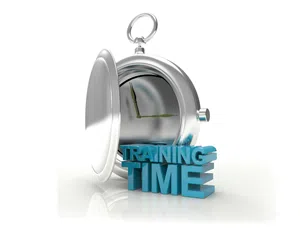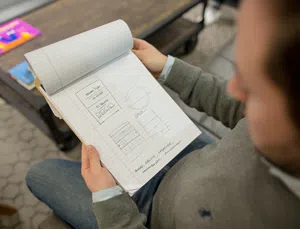Find a candidate who fits well with your company, then train and nurture them to be a great employee.
Culture is a way of thinking, behaving or working that exists in a place or organization. Every company has one and those who use it as a guideline to build strong, loyal teams are some of the most successful around.
Whatever your company culture is, you'll have the most success recruiting if you hire based on those principles. If, like many companies, your culture is to be in business to help people, then finding the right employees to achieve that is most crucial.
Attitude vs. Aptitude
It's no secret in this industry — good technicians can be difficult to find. Consider this: 53 percent of HVACR field personnel are within 15 years of retirement age and enrollment in HVACR programs is down 32 percent.
Suddenly, it's painfully apparent that finding the "good ones" is only going to continue to be difficult in the years ahead. That said, it's time to change the way we, as an industry, recruit and hire technicians.
Most companies look at both the aptitude of a prospect and his or her attitude. Each has it's own set of pros and cons and, while one can be taught, the other can be extremely difficult to change.
A prospect with good aptitude has an instant ability to generate revenue and can replace an experienced employee, most times, without missing a beat. In many cases, they may also be familiar with your company's service system, which also quickens the pace at which you can bring them up to speed.
On the other hand, they also bring with them habits, both good and bad. In many cases, a prospective employee with good aptitude often believes they know a better way to do things than, perhaps, you're comfortable teaching.
If they have experience and are looking for a job with your company, there may be a good reason they're available and their attitude may not fit well with your company culture.
A great attitude cannot be taught. If you can find a prospect with a great attitude that matches your company culture of like minded people, you won't have to spend a great deal of time trying to "re-program" them to fit within your company.
Of course, if they lack the technical skills needed for a position with your company, it will take some time to get up to speed.
Ideally, you want employees with both great aptitude and a great attitude — and if you can find that person, hire them immediately. Often, though, you're faced with a one or the other choice. In those cases, it's better to go with a great attitude rather than the "quick fix."
Nearly 20 years ago, we hired a high school co-op student with a great attitude who we've been able to teach and train throughout the years. Today, he is our lead commercial service technician. It took many years to realize this worked well, but now it's the primary way we hire new technicians.
Hiring for attitude doesn't mean you can totally overlook aptitude. Sure, we want employees who are going to fit well within our company culture, but we also require them to have either completed an HVACR program or currently be enrolled in one.
The Hiring Process
There are many places to find candidates today, with multiple job posting sights on the Internet. In addition, it's a good idea to build relationships with local trade schools and community colleges.
And, don't forget about referrals — customer referrals can be a great source of business, and employee referrals can be an excellent way to find additional, like-minded employees. You can certainly sweeten the deal by offering a recruitment reward for employees.
After you've targeted your potential candidates, the first step should consist of a brief phone interview.
If you're satisfied with that initial interview, you can have the candidate take an employment survey, such as the one offered by Acumax, which will help narrow down the position for which each candidate is best suited.
If the results come back as a match for your needs, you can proceed to the next step of the hiring process. If not, send the candidate a polite rejection letter.
The next step is to schedule multiple visits/interviews, which will ensure all questions on both sides have been addressed, as well as give both parties a better idea about the candidate's fit within the company culture.
The first interview should take place with the reporting manager and another member of the management team. After that, the candidate moves on to a two-step, second interview.
In the first step, have the candidate bring their tools and meet with your technical trainer. They may have limited experience, so you should look at their sense of how to proceed with troubleshooting.
After the assessment from your technical trainer, the candidate should meet with two different members of the management team.
Finally, upon completion of those first two interviews, the technical trainer, reporting manager and members of the management team should meet to compare notes and make a hiring decision.
A third interview with the candidate is nothing more than a job offer, which, if accepted, is contingent on passing a background check and drug screening.
The Training Process
The majority of our new hires work in the warehouse for a period of time, generally less than six months. Once they graduate to the field, or if they're placed directly into the field, they ride with one of two field technical supervisors.
Each technician rides for a minimum of four weeks before they're promoted to a Level 1 Technician.
In addition to the ride-along training, our new technicians complete 20 hours of technical classroom training and enroll in our service system training.
On a weekly basis, the department manager, technical trainer and field technical supervisor have a brief meeting to discuss the new employee's progress.
To be promoted to a Level 1 Technician, they must obtain all tools listed in their job description. Once they're on their own, we have a technical supervisor ride with them on a weekly basis for an additional six months.
When a technician moves into a truck on they're own, they're also given the next level job description, so they'll know what it required to move up. To move up a level, each technician must pass written and practical exams.
In addition, technicians who move from Level 1 to Level 2 must earn NATE certification.
Each technician is required to attend 40 hours each year of in-house, technical training. Technical training is designed to advance technicians through the ranks, preparing them for the written and practical exams.
Measuring Progress, Performance
Employees should have a semi-annual review, performed by their department manager. The review should consist of multiple parts, which may include:
- A core values analysis
- Major job functions
- Specific job measurements (KPIs)
- Career path (Goals/initiatives within the company)
- Future plan of action
In addition, it's a good idea for your service technicians to receive a performance report on a monthly basis, as well as a customer feed back report.
Making sure you recognize those who are an active part of your culture is key, and spreads like wild fire — in a good way. Celebrate and reward those employees who are caught going above and beyond and you'll soon have a workforce that is strong and loyal to your company.
 Matt Marsiglio is operations manager at Flame Heating, Cooling, Plumbing and Electrical in Warren, Mich. For additional information, visit www.flamefurnace.com.
Matt Marsiglio is operations manager at Flame Heating, Cooling, Plumbing and Electrical in Warren, Mich. For additional information, visit www.flamefurnace.com.


 Matt Marsiglio is operations manager at Flame Heating, Cooling, Plumbing and Electrical in Warren, Mich. For additional information, visit
Matt Marsiglio is operations manager at Flame Heating, Cooling, Plumbing and Electrical in Warren, Mich. For additional information, visit 

